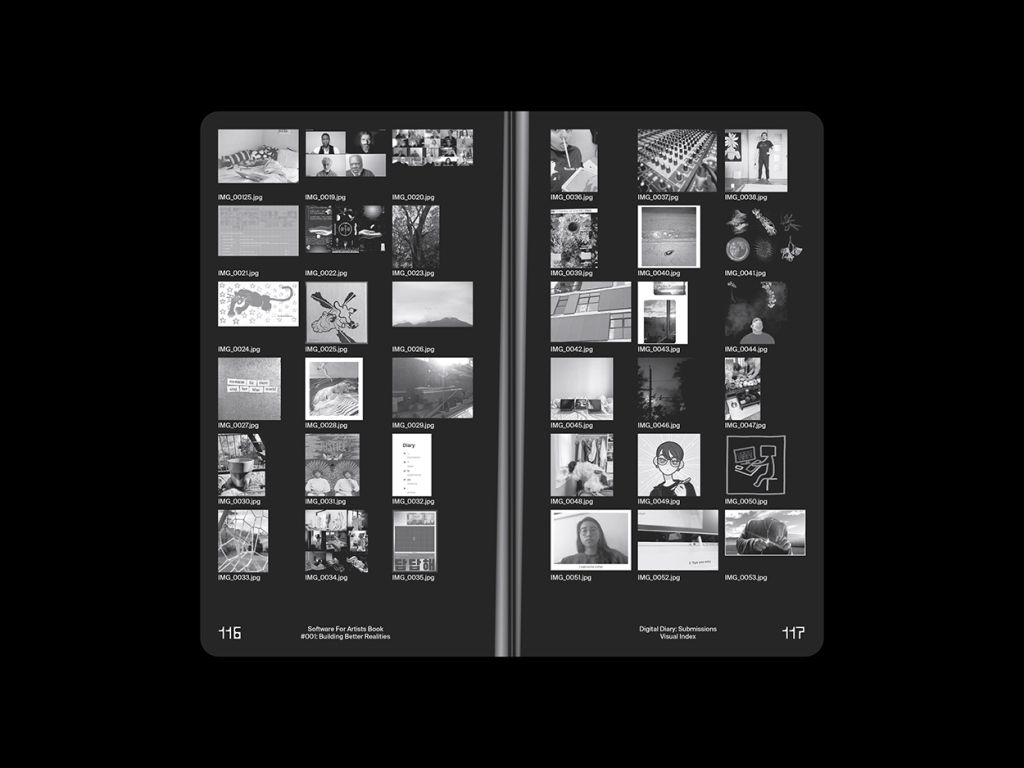[ad_1]
Yesterday Willa Köerner, a creative strategy consultant, joined me to talk about a new book she edited titled Building Better Realities. It came out of an annual conference series at Pioneer Works in Brooklyn called Software for Artists Day, and continues that event’s focus on critical approaches to technology. The book includes interviews with Tsige Tafesse, Salome Asega, Ryan Kuo, and other artists concerned not so much with tech for its own sake as with how it can be used to build communities for sharing knowledge and resources.
Köerner said that the platforms and tools produced by Silicon Valley are all but impossible to improve, given the biases built into them and the profit motive behind them, but they can be coopted to make something different. She’s wary of frictionless interfaces that make the user passive and encourage addictive behavior. She tries to practice mindfulness and intentionally as a user. Our conversation was part of a weekly series of IG Live chats about art and tech. On August 13 at noon, gallerist and meme-maker Hilde Lynn Helphenstein, better known by the Instagram handle @jerrygogosian, will discuss humor and honesty in the art world.
Last week, Spotify CEO Daniel Ek said that musicians need to break out of the old way of working, releasing albums once every three or four years, and be continuously productive to engage their audiences. This sparked some indignant responses about the nature of the creative process, including a thread on Twitter from Holly Herndon, a composer interviewed in our January issue on generative art and AI. “I spent years mostly sucking but spending time in communities, finding supportive people who I felt ok trying new stuff out with, and learning,” she wrote. “I still spend time sucking at new stuff. If there is anything interesting about my art it is through this kind of continuous engagement.” Colin Self, a composer and performer who sometimes collaborates with Herndon, chimed in and pushed the conversation toward collective practices that aren’t easily packaged by platforms like Spotify. “I realized over the last few years that the effort of cultivating collective spaces and experiences is a long and non-glamorous one, but the outcome is much greater than anything that could be measured monetarily,” tweeted Self.
Also on Twitter, digital strategy consultant Tom Critchlow shared a thread bringing together a recent spate of online essays about the scrolling motion of reading on a browser or a phone. Digital product designer Aaron Z. Lewis’s “Chain Reaction” presents thoughts on intergenerational relations between boomers and zoomers as an augmented text conversation. Graphic designer Livia Foldes’s “memory metadata” is a lyrical reflection on how devices collect and interpret information, and how this changes our relationship to our own experiences. She zeroes in on pixels in a photo of her sister and niece, explaining how the camera application guesses about what it can’t see. “My memory, in the moment of its capture, was at once flattened and augmented, made both less and more,” she writes. These and the other essays collected by Critchlow thoughtfully fold the medium into their arguments. Together, they suggest that there’s some fresh energy in rethinking the possibilities of digital media for communicating ideas.
For more criticism, news, and links, subscribe to The Program, our weekly email newsletter on art and technology.
[ad_2]
Source link


